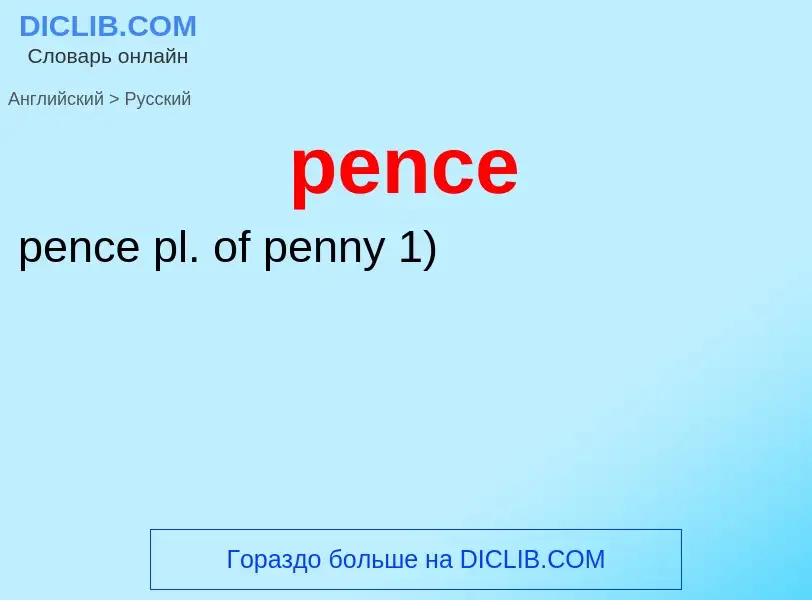Перевод и анализ слов искусственным интеллектом ChatGPT
На этой странице Вы можете получить подробный анализ слова или словосочетания, произведенный с помощью лучшей на сегодняшний день технологии искусственного интеллекта:
- как употребляется слово
- частота употребления
- используется оно чаще в устной или письменной речи
- варианты перевода слова
- примеры употребления (несколько фраз с переводом)
- этимология
pence - перевод на Английский
[pens]
общая лексика
пенсы (от penny, когда речь идёт о сумме)
от penny
синоним
Смотрите также
['peni]
существительное
общая лексика
Пенни (женское имя)
уменьшительная форма
of Penelope Пенни
Смотрите также
['penɪz]
общая лексика
пенни, пенсы (от penny, когда речь идёт об отдельных монетах)
Смотрите также
['penɪ]
общая лексика
пенни (мелкая монета из бронзы или медно-никелевого сплава; = 0,01 ф.ст., до 1971 = 1/12 шиллинга = 1/240 ф.ст.)
прилагательное
общая лексика
стоимостью в один пенс или один цент
дешёвый
существительное
['peni]
общая лексика
пенни
пенс
деньги
Канада
монета в 1 цент
сленг
полицейский
2) амер., разг. цент
3) разг. малая сумма денег
Определение
Википедия

A penny is a coin (pl. pennies) or a unit of currency (pl. pence) in various countries. Borrowed from the Carolingian denarius (hence its former abbreviation d.), it is usually the smallest denomination within a currency system. Presently, it is the formal name of the British penny (abbr. p) and the de facto name of the American one-cent coin (abbr. ¢) as well as the informal Irish designation of the 1 cent euro coin (abbr. c). Due to inflation, pennies have lost virtually all their purchasing power and are often viewed as an expensive burden to merchants, banks, government mints and the public in general.
Penny is also the informal name of the cent unit of account in Canada, although one-cent coins were removed from circulation in 2012. Similarly, Australian one-cent coins were withdrawn from circulation in 1992 and New Zealand one-cent coins were demonetised in 1990.
The name penny is also used in reference to various historical currencies, also derived from the Carolingian system, such as the French denier and the German pfennig. It may also be informally used to refer to any similar smallest-denomination coin, such as the euro cent or Chinese fen.
The Carolingian penny was originally a 0.940-fine silver coin, weighing 1⁄240 pound. It was adopted by Offa of Mercia and other English kings and remained the principal currency in Europe over the next few centuries, until repeated debasements necessitated the development of more valuable coins. The British penny remained a silver coin until the expense of the Napoleonic Wars prompted the use of base metals in 1797. Despite the decimalization of currencies in the United States and, later, throughout the British Commonwealth, the name remains in informal use.
No penny is currently formally subdivided, although farthings (1⁄4d), halfpennies, and half cents have previously been minted and the mill (1⁄10¢) remains in use as a unit of account in some contexts.


.jpg?width=200)
